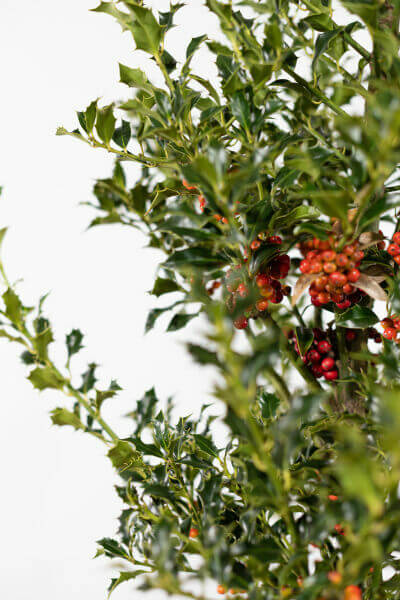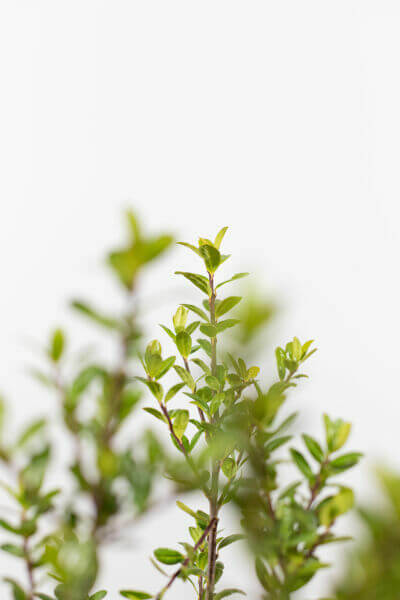Best Hedge Plants For Sun And Shade
Boost your garden's allure with lavish hedge varieties such as Yew (Taxus), Thuja, Laurel, Photinia, and Bamboo, commemorated for their structural integrity and ecological benefits.
Yew and Thuja offer evergreen coverage and winter season resilience, while Laurel offers fast growth and broad, aromatic leaves.
Photinia includes seasonal charm with its dynamic red foliage, and Bamboo lends a low-maintenance, peaceful ambiance.
These hedges improve air quality, minimize sound, and develop tranquil, private spaces.
Proper planting, spacing, and upkeep ensure energetic growth and eco-friendly harmony.
Explore how these lavish varieties can raise your garden's charm and wellness.
Key Takeaways
Change Your Garden With Lush Hedge Varieties
- Select Yew for its thick, evergreen development and unequaled longevity.
- Opt for Laurel for its quick growth and broad leaves, making sure quick privacy.
- Pick Photinia for its lively seasonal foliage, which turns a striking dark red.
- Utilize Bamboo for a low-maintenance, winter-hardy hedge with visual appeal.
- Area plants 2-3 per meter and prune routinely for optimum growth and health.
Popular Hedge Plants
When transforming a garden with lavish hedge varieties, it's important to think about popular hedge plants such as Yew, Thuja, Laurel, and Photinia due to their special qualities and benefits.
Yew (Taxus) is extremely respected for its longevity and thick, green growth, making it a prime option for withstanding landscapes.
Thuja is noted for its evergreen foliage and robust winter durability.
Photinia includes seasonal vibrancy with red leaves that darken in time, producing dynamic visual appeal.
Laurel uses quick growth and fragrant, broad leaves, ideal for quick personal privacy.
Furthermore, Bamboo is an excellent choice for ambiance, providing a low-maintenance, winter-hardy choice that improves the garden's visual with its sophisticated, swaying walking canes.
These choices deal with a range of horticultural requirements and choices.
Benefits of Garden Hedges
Garden hedges offer a plethora of benefits, making them an important addition to any landscape. These natural barriers are cost-efficient to carry out and provide significant wind protection, improving air circulation and contributing to sound reduction. The thick foliage of hedges like Thuja and Beech guarantees privacy by obstructing visibility, developing a remote and peaceful environment.
Hedges likewise play an essential role in microclimate regulation, supplying a steady environment that fosters plant development and decreases temperature level changes. Their intricate leaf structures filter toxins, enhancing air quality and contributing to a much healthier garden community.
Moreover, hedges master sound reduction, soaking up and deflecting sound waves to lower ambient sound levels. This dual functionality of offering both visual and acoustic personal privacy enhances the overall harmony and aesthetic appeal of any garden.
Planting and Maintenance Tips
For a successful hedge, careful preparation of the planting area is vital. Guarantee the soil has correct pH and drainage to support strong root advancement.
Space the plants properly for the chosen species. Water the hedge regularly during its preliminary development phase, adjusting as required with seasonal changes.
Carry out a systematic insect control and illness prevention method, utilizing organic or chemical treatments when needed. Regularly examine for aphids, mites, and fungal infections.
Apply mulch to maintain moisture and suppress weeds. Seasonal pruning promotes thick development and air flow, essential for plant health.
Following these guidelines will assist you cultivate a dynamic, well-maintained hedge that improves the appeal of your garden.
Spacing and Trimming Standards
Spacing and Trimming Standards
Proper spacing and trimming are essential for cultivating healthy, aesthetically appealing hedges. Appropriate spacing makes sure each plant receives sufficient nutrients, light, and airflow.
Follow these standards for optimum hedge maintenance:
- Spacing: Position hedge plants 2-3 plants per meter to encourage robust growth.
- Pruning Strategies: Regular pruning is vital for keeping preferred hedge height and shape. Cut brand-new development in summertime and cut down older wood throughout winter season.
- Seasonal Care: Adjust trimming schedules and techniques according to seasonal requirements to guarantee plant health.
- Hedge Height: Regularly screen and cut to preserve the preferred hedge height and accomplish uniform aesthetic appeals.
Following these actions will guarantee your hedge grows, boosting both the appeal and performance of your garden.
Picking the Right Hedge
Picking the Right Hedge
Picking the suitable hedge involves assessing factors such as mature height, foliage density, and environmental resilience. Successful hedge plant selection needs comprehending each types' development qualities and site-specific adaptability.
For example, Yew (Taxus) provides excellent longevity and thick growth, while Thuja is significant for its winter durability. Additionally, considering maintenance requirements is important; fast-growing types like Laurel or Privet need regular cutting, whereas low-maintenance alternatives like Bamboo or Ivy might be preferable for those looking for very little maintenance.
Environmental aspects such as soil type, light accessibility, and wetness conditions must likewise assist the selection procedure. This careful technique guarantees the selected hedges will thrive, offering both aesthetic and functional advantages to the garden landscape.
Delivery and Planting Recommendations
To guarantee your hedge plants flourish, they ought to be provided by specialized carriers and planted quickly upon arrival.
Follow these essential actions for effective planting:
- Soil Preparation: Enrich the soil with natural matter to improve drainage and nutrient material.
- Planting Depth: Produce a trench two times the width and equivalent to the depth of the root ball.
- Watering Techniques: Water thoroughly after planting, keeping the soil consistently damp but not saturated.
- Mulching: Apply a layer of mulch to retain moisture and suppress weeds.
Client Assistance and Service
Provided the crucial function of prompt help in horticultural pursuits, our consumer support team is available 6 days a week through telephone, email, and social networks to provide skilled advice and swiftly address any concerns. Their dedication to quick response times guarantees client fulfillment by fixing questions associated with plant health, ideal planting techniques, and maintenance schedules.

-------------------
6 days a week
This detailed support group, reinforced by an excellent 9.3/ 10 client score, highlights our commitment to boosting the gardening experience for every customer.
Often Asked Questions
The Length Of Time Does It Take for Hedge Plants to Develop?
Hedge plants typically need one to three years to end up being completely developed, with the precise period varying by types and growing conditions.
Effective care throughout this crucial duration is essential for robust development. Consistent watering, watchful weed control, and appropriate fertilizer application are essential in promoting strong root development.
For example, fast-growing types like Laurel may establish more rapidly, while slower-growing varieties such as Yew may take longer. Thorough upkeep accelerates the establishment procedure, resulting in thick and healthy hedges.
What Are the Best Hedge Plants for Personal Privacy?
The concern of the best hedge plants for personal privacy includes evaluating evergreen and deciduous choices.
Evergreen hedges like Thuja, Laurel, and Cypress supply year-round protection, ensuring continuous personal privacy.
On the other hand, deciduous hedges such as Beech offer seasonal personal privacy, shedding leaves in cooler months.
Secret upkeep tips for privacy hedges include routine cutting, fertilizing in spring, and correct spacing-- normally 2 to 3 plants per meter.
Additionally, consistent watering and diligent weed removal are crucial for promoting healthy, dense growth.
Can Hedge Plants Draw In Wildlife to My Garden?
Yes, hedge plants can draw in wildlife to your garden by offering vital benefits like shelter, food, and nesting sites, therefore improving regional biodiversity. For example, yew, holly, and laurel are exceptional for bring in birds, while ivy supports a range of pests.
However, it is very important to keep in mind that there are some disadvantages, such as increased maintenance to handle bugs and regular upkeep. Thoroughly picking and keeping hedge varieties can help stabilize these drawbacks and advantages, ultimately fostering a sustainable and lively community in your garden.
Are There Any Blooming Hedge Plants Available?
Yes, there are flowering hedge plants offered that can enhance the appeal of your garden.
For example, Elaeagnus, also referred to as Olive Willow, produces fragrant white flowers in the fall, including a touch of elegance.
Photinia, another popular option, showcases dynamic red leaves that grow into a rich green, developing a dynamic visual effect throughout the seasons.
To make sure these plants flourish, it's necessary to practice appropriate pruning techniques and seasonal maintenance, such as cutting new development in the summer and cutting down in the winter season.
These steps will assist maintain the health and aesthetic appeal of your blooming hedges.
How Do I Prevent Insects in My Hedge Plants?
To avoid insects in hedge plants, use natural pest control techniques and keep proper hedge care. Introduce helpful insects like ladybugs, which take advantage of damaging bugs, to create a balanced community.
Frequently inspect your hedges for indications of infestation and immediately get rid of any affected parts to prevent the spread. Guarantee the health of your hedges by using well balanced fertilizers and supplying adequate water.
Utilize mulching to keep soil moisture and appropriate spacing to minimize plant tension and promote robust development. These practices jointly assist in minimizing pest issues and preserving a healthy hedge.
Conclusion
In essence, selecting the best hedge varieties such as Yew, Thuja, and Laurel can transform any garden into a peaceful haven. Browse this site These plants provide year-round greenery, boost visual appeal, and deal useful benefits like noise reduction and wind security.
Appropriate planting methods, accurate spacing, consistent watering, and seasonal cutting are crucial for optimum development.
Reliable delivery services and expert consumer assistance guarantee a seamless experience from purchase to planting, making it simpler than ever to raise your outdoor space.
Garden hedges use a plethora of advantages, making them a valuable addition to any landscape. These natural barriers are cost-effective to carry out and offer significant wind protection, enhancing air blood circulation and contributing to noise reduction. The thick foliage of hedges like Thuja and Beech ensures personal privacy by obstructing presence, producing a secluded and peaceful environment.

Pruning Strategies: Routine pruning is necessary for keeping wanted hedge height and shape. Cut brand-new growth in summertime and cut back older wood during winter.